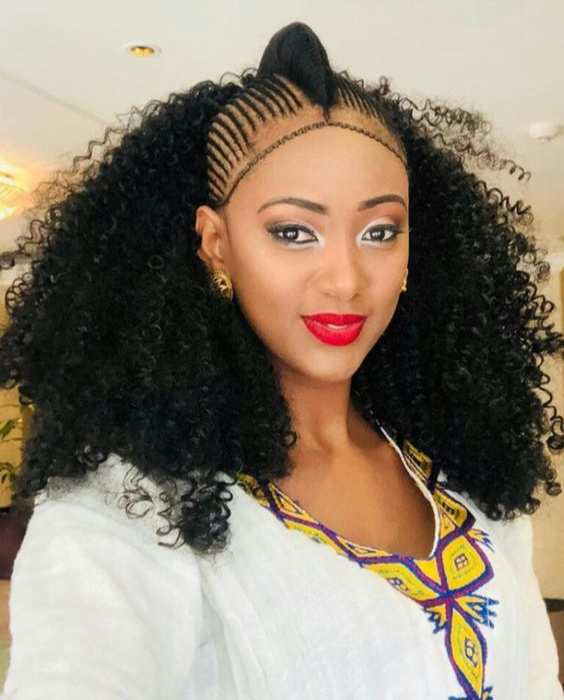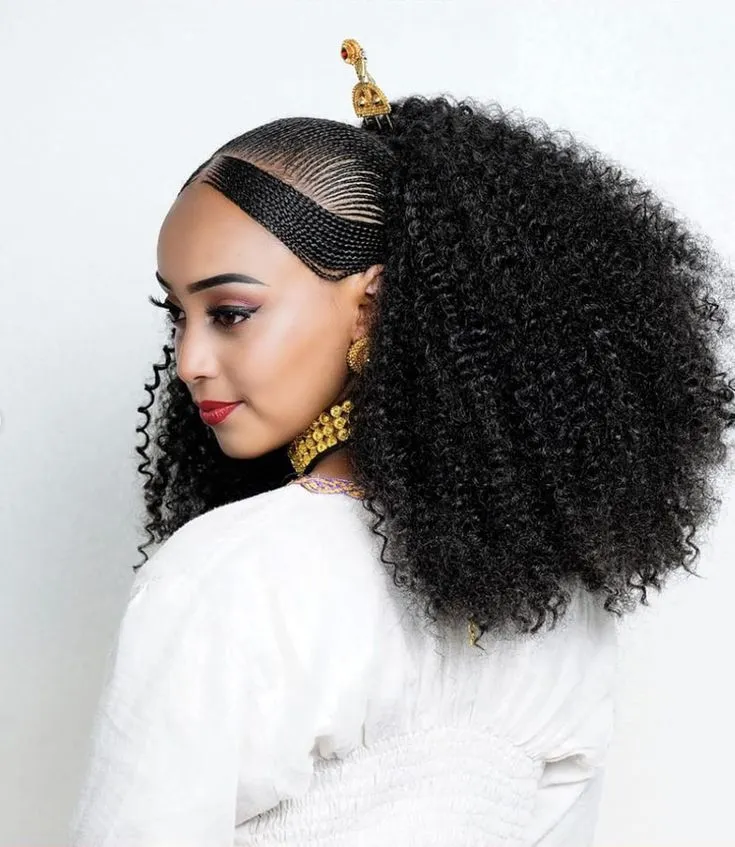Ethiopian Fulani braids are a traditional hairstyle that blends the techniques of the Fulani people of West Africa with styles common in Ethiopia.
The Fulani people are known for their intricate and symbolic braiding patterns, which often include cornrows braided close to the scalp, long hanging braids, and adornments such as beads and cowrie shells.
In the Ethiopian context, these braids often incorporate larger, sculptural styles seen in regions like Tigray, combined with the signature cornrows and central part that characterize Fulani braids.
This fusion creates a hairstyle that is both artistic and deeply rooted in African heritage.
Table of Contents

Key Features of Ethiopian Fulani Braids
The braids are usually symmetrical and can feature a mix of thin and thick plaits.
Adornments are often added for both cultural and decorative purposes, and styles may vary depending on the occasion or personal preference.
These braids are not just aesthetic—they often signify cultural identity, marital status, or social rank.
With proper care, such as regular moisturizing and nightly protection, Ethiopian Fulani braids can last between three to six weeks.
It’s important to avoid braiding too tightly to prevent tension on the scalp and hairline.
As the style has gained popularity globally, many people wear these braids as a way to connect with or celebrate African heritage.
However, it’s important to recognize their cultural significance and to approach them with respect.
Ethiopian Braid Hairstyles
Ethiopian braid hairstyles are a vibrant expression of cultural identity, artistry, and heritage.
These intricate styles, passed down through generations, serve not only as aesthetic choices but also as symbols of social status, ethnicity, and personal milestones.
Cultural Significance of Ethiopian Hairstyles Braids
In Ethiopia, braiding is deeply rooted in tradition. Hairstyles often indicate a person’s age, marital status, religious beliefs, or regional affiliation.
For instance, certain styles are reserved for weddings, festivals, or rites of passage, reflecting the wearer’s role and status within the community.
Iconic Ethiopian Traditional Braids
Here are some of the most renowned Ethiopian braid styles:
1. Albaso Braids
Originating from the Habesha people, Albaso braids feature five to seven thick cornrows alternating with thinner ones, culminating in voluminous curls or afros at the back.
Often adorned with beads or cowrie shells, this style is traditionally worn during special occasions like weddings and cultural celebrations.
2. Shuruba Braids
Popular among the Tigray and Amhara communities, Shuruba braids consist of small, intricate cornrows woven tightly to the scalp, sometimes incorporating a forehead braid for added elegance.
This style is both a daily wear and a ceremonial choice.
3. Gondar Braids
Named after the historic city of Gondar, these braids are characterized by their tight weaving and are often embellished with beads, cowrie shells, or colored threads. They are typically worn during festivals and significant events.
4. Harar Braids
Originating from the Harari region, these braids are simpler in design, often worn by young girls and adorned with colorful beads, reflecting the region’s unique cultural aesthetics.
Shuruba Style 2023

African Hair Braid Styles: Fulani Braids 2023

Photo credits: Clipkulture, Pinterest